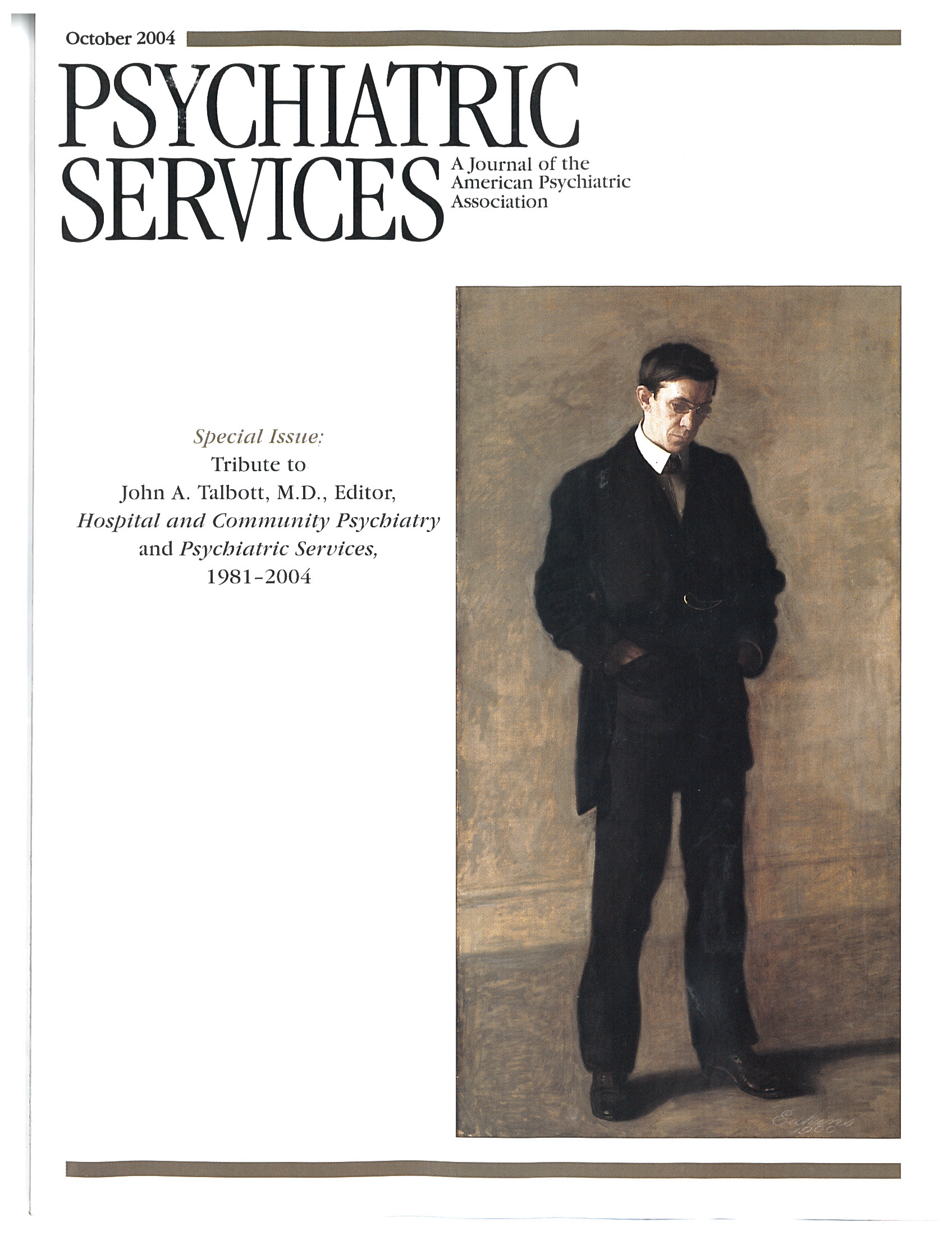To the Editor: Psychiatry, more than other major medical specialties, cares for disabled individuals. APA was formed 160 years ago to promulgate the needs of people with psychiatric disabilities living in psychiatric institutions. These individuals began moving from institutions to the community in the mid-1950s, but APA was slow to describe their needs. This situation changed with the appointment three decades ago of John Talbott to chair APA's committee on the chronic mental patient.
John created a committee like no other in APA's history. In addition to the appointed members, he had a large number of consultants with various backgrounds, some of whom were not psychiatrists. To serve disabled people in the community, John pointed out the need for comprehensiveness that went well beyond purely psychiatric services. He pointed out that there needed to be a continuity that went well beyond the usual thinking, which was limited to clinics, day programs, and hospitals. In other words, he made it clear that there was no part of APA that should not be involved in meeting the needs of this population.
Not only did we attend many seminal committee meetings, but John had us going to other components to ask what they were doing for patients with chronic illness. We would visit the research committees, the education committees, the Psychiatric Services committees, and the government relations committees and ask—or demand—that their agenda include addressing the needs of these patients. These activities gave the committee an omnipresence—a few would say "an obnoxious presence"—throughout APA.
Although the committee's work and Talbott's presidency enormously enhanced APA's positions on improving the care and treatment of people with psychiatric disabilities, it was also necessary to build an all-pervading foundation of knowledge and skills. John's leadership of Hospital and Community Psychiatry and of Psychiatric Services has provided that foundation.
The very extensive needs of people with psychiatric disabilities are described in Psychiatric Services, whose authors and readers probably reflect one of the broadest representations of disciplines among medical journals. Psychiatric Services describes the social, educational, economic, legal, vocational, occupational, spiritual, artistic, cultural, and nonpsychiatric medical needs of people with psychiatric disabilities—as well as needed changes within psychiatry itself. Talbott's Psychiatric Services has led the way in stating what is required for people with psychiatric disabilities to live in the community. Moreover, no matter where people with psychiatric disabilities are to be found—in hospitals or nursing homes, on the streets, in jails and prisons, or in morgues—Talbott's Psychiatric Services has found them and has reminded us of how they could have been better served.
A recent visitor to Heaven asked the 13 psychiatrists who founded APA in 1844, "Who has been carrying out your mission for APA in modern times?" The answer: John Talbott.
Dr. Peele is chief psychiatrist for Montgomery County, Maryland, and clinical professor at George Washington University in Washington, D.C.



